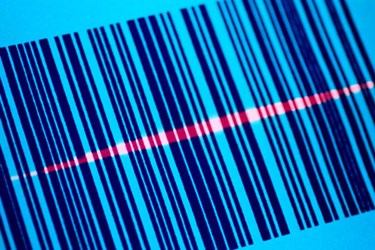Why Retail Needs A Web-Enabled Barcode
By Carrie Wilkie, GS1 US

Consumers around the globe are scanning products using their smartphones to learn more about what they want to buy — or what they’ve just purchased.
Some manufacturers have responded by adding QR codes and secondary barcodes on packages that connect consumers to more product information. Not only do these extra codes take up valuable label “real estate,” but they may not even contain standardized product identifiers like UPCs, causing confusion when scanning at point-of-sale checkout counters.
This is where GS1 Digital Link can help. It is a new, global standard being developed by GS1 US, the not-for-profit global standards organization, along with an international working group of retailers, brand owners, solution providers, technology experts, and other stakeholders to “web-enable” barcodes and enhance the shopping experience, strengthen brand loyalty, and improve supply chain efficiencies.
GS1 Digital Link leverages the power and ubiquity of the Web and data carriers like QR codes, RFID tags, or NFC tags to make room for a digitally-enabled, globally-unique identifier that can link to all types of B2C and B2B information — from product dimensions and images to batch/lot numbers, expiration dates, nutritional data, warranty registration, troubleshooting instructions, and even social media links. All of this can be achieved through a single scan of a barcode or tag using global standards, while also enabling a future where optical point-of-sale scanners could use the globally-unique GS1 identifier in that same code at checkout.
GS1 US expects end users will begin pilot programs using the standard by the end of the year. Solution provider EVRYTHNG’s platform has already been upgraded to support the new standard.
Dominique Guinard, CTO and Co-founder of EVRYTHNG and co-chair of the GS1 Digital Link standards development working group said of the new standard, “This means that each of the four trillion items manufactured yearly can now be automatically connected to the Web. Two billion consumer phones have the capability to natively scan codes and consumers are already interacting digitally with offline items, evidenced by a huge uptick in QR code engagement.”
Laurent Tonnelier, president of mobiLead and serviceTag, co-chair of the GS1 Digital Link working group, foresees the broad impact that the standard will have. “It’s all about satisfying the needs of consumers, retailers and the supply chain as a whole,” he says. “Connecting business partners and consumers to relevant information through a simple on-pack barcode or tag makes it simpler to build bridges between brands, their supply chain partners and consumers.”
Retailers and brands will benefit in several ways using GS1 Digital Link.
Reducing Redundancies
By linking a barcode to multiple related sources, GS1 Digital Link simplifies product packaging through a single, globally-recognized code that is compatible for use among consumers, point-of-sale and the supply chain as a whole.
Once deployed, applications will be able to link to specific product information, such as instruction manuals, product after-care information, traceability information, warranties, safety information, nutritional information, user forums and more. This will be made possible via resolver services that can provide information directly, or that can redirect requests to related resources.
Boosting Customer Loyalty
Being able to obtain and share accurate data is important to today’s consumers. By simply scanning a QR code with a smartphone, consumers will be able to collect coupons and loyalty points right on the spot, and even share brand-authorized product information with friends on social media. GS1 Digital Link will enable apps to help consumers check the authenticity of products, or to scan a product for specific allergens or ingredients they may be trying to avoid.
As the use of GS1 Digital Link evolves, consumers will also be able to place home delivery orders for currently out of stock items, or even see if there is available inventory in other store locations or stockrooms without having to flag down a sales associate.
Strengthening Consumer Connections
GS1 Digital Link can help brands and retailers grow their relationships with consumers by offering new services and content triggered by the physical product itself.
Price comparison is one of the key in-store issues facing retailers today. Retailer apps and solutions will be able to decode the globally-unique identifier in any GS1 Digital Link barcode or tag, and use this information to enable alerts and other direct customer communication offerings, such as discounts, price matching or other incentives to get the shopper to purchase an item in the store rather than walking away and buying it elsewhere.
Supply Chain Benefits
On the supply side, GS1 Digital Link offers tremendous advantages. For one, GS1 identifiers can help to communicate important safety information for medical products, hazardous substances and more as well as provide advice on safe handling and transportation. The identifiers might also connect to important information about safe disposal of the product.
GS1 Digital Link can also enable the capture of photographic evidence of supply chain events, proving that the correct items were packed in the correct quantity at a certain time and place. GS1 Digital Link also works with the rest of the GS1 system to ensure globally unique identity in an effort to prevent counterfeiting and shipping errors.
Additionally, GS1 Digital Link enhances traceability solutions by enabling the coding and identification of specific product batches in case of a product recall. For instance, the recent romaine lettuce E.coli outbreak proved that product is still difficult to trace with precision. Because the specific batch/lot number was not available to many retailers scanning the product at the time, potentially unaffected product still had to be immediately removed and destroyed, resulting in significant loss of revenue and trust.
Retailers can also use the standard to enable solutions that share alerts about upcoming expiration dates so that they can plan to remove the product or offer discounts on the product to the consumer, even in real-time while in the store, in order to cut down on unnecessary waste and costs.
Working Together
As with all global standards, what’s needed from industry is more participation to bring these aspirations and use cases to fruition. The more we all work together on embracing this new standard and supporting technology, the faster that everyone will reap the many benefits offered for brands, retailers and consumers alike.
About The Author
Carrie Wilkie, senior vice president of standards development, is responsible for the development and management of GS1 Standards in support of core and emerging industry engagement activities, including the development of strategies, policies, and procedures as they align with industry requirements. More information is available at www.gs1us.org.
